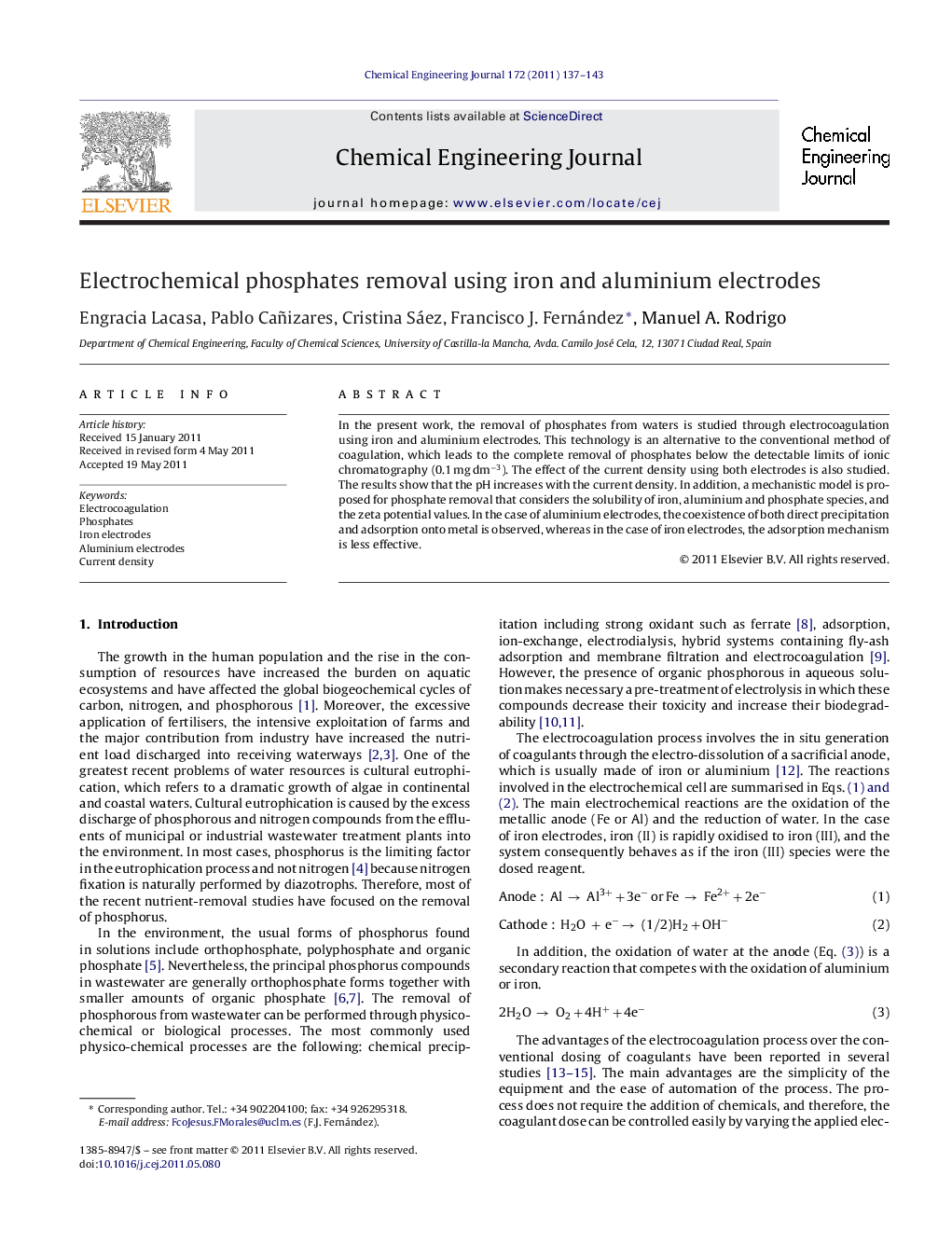| Article ID | Journal | Published Year | Pages | File Type |
|---|---|---|---|---|
| 151036 | Chemical Engineering Journal | 2011 | 7 Pages |
In the present work, the removal of phosphates from waters is studied through electrocoagulation using iron and aluminium electrodes. This technology is an alternative to the conventional method of coagulation, which leads to the complete removal of phosphates below the detectable limits of ionic chromatography (0.1 mg dm−3). The effect of the current density using both electrodes is also studied. The results show that the pH increases with the current density. In addition, a mechanistic model is proposed for phosphate removal that considers the solubility of iron, aluminium and phosphate species, and the zeta potential values. In the case of aluminium electrodes, the coexistence of both direct precipitation and adsorption onto metal is observed, whereas in the case of iron electrodes, the adsorption mechanism is less effective.
► Iron and aluminium electrodes for phosphate removal from wastewater. ► Allowed to remove phosphate under the detection limits (0.01 mg dm−3). ► With iron electrodes, phosphate removal efficiency increase at the low current densities. ► With aluminium electrodes, the current density had a smaller influence. ► pH exhibited a significant influence, indicating adsorption onto metal hydroxide.
